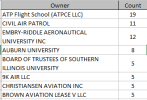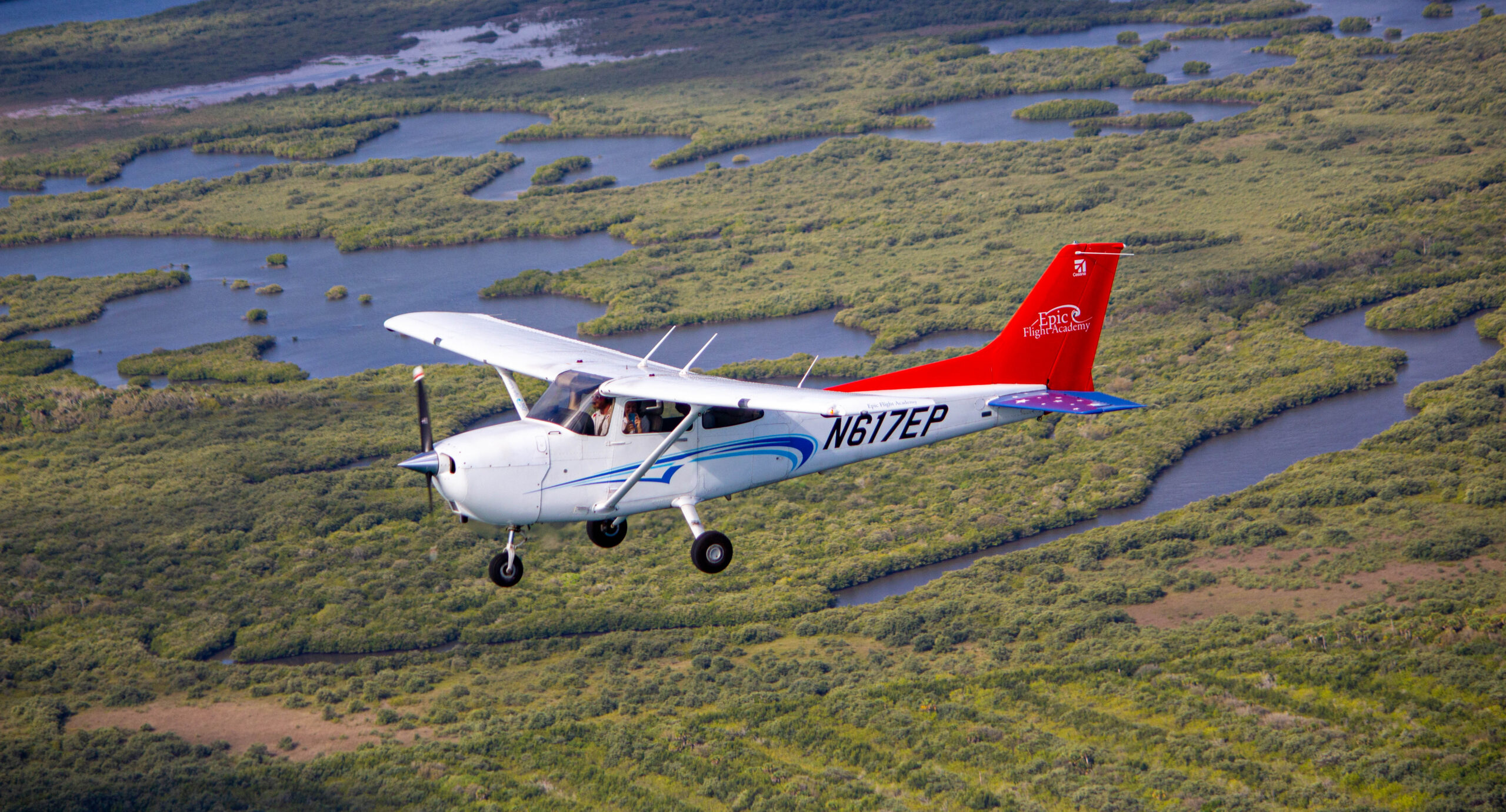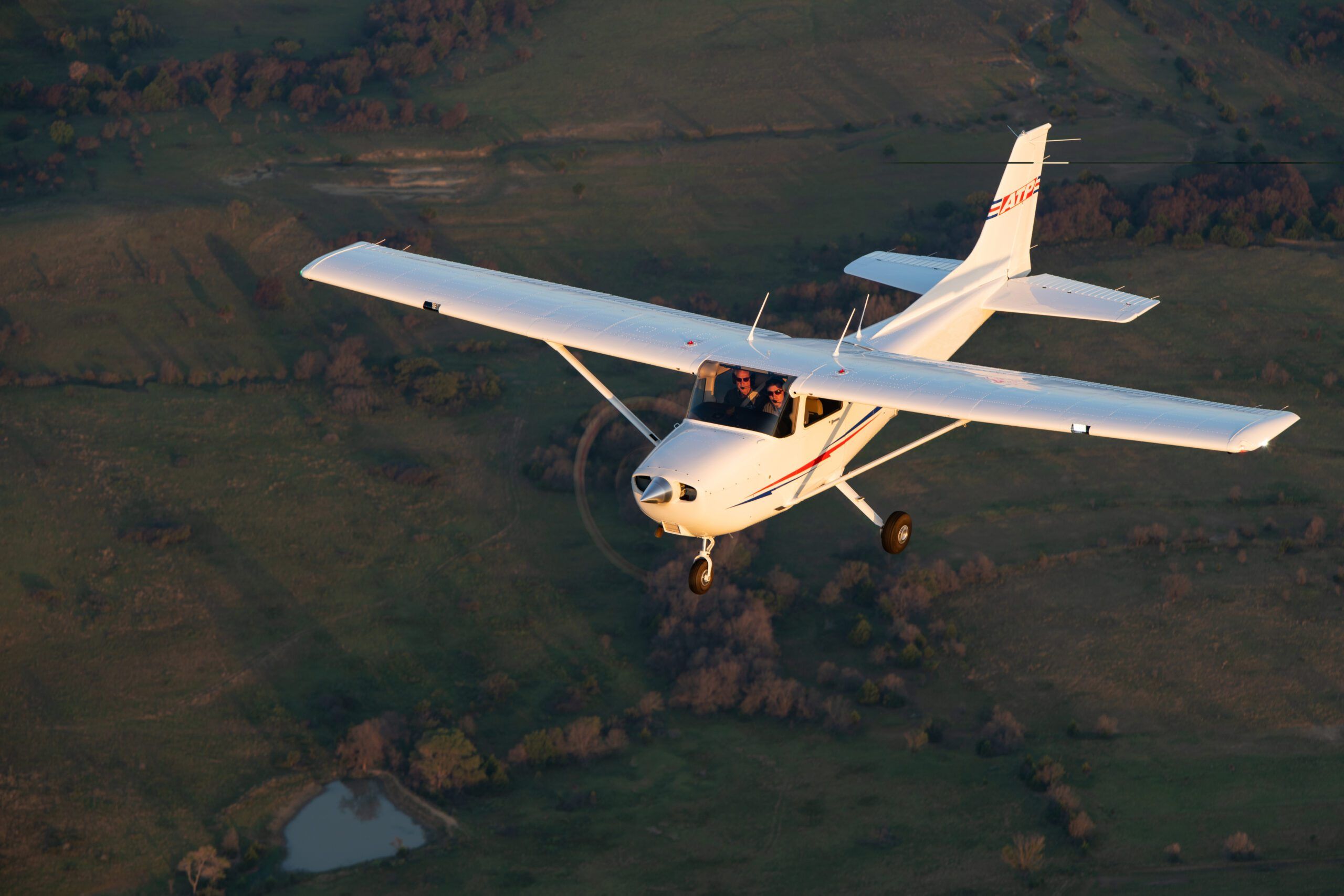Simple. An affordable price.
None of that other stuff matters.
None of that other stuff matters.
I hear you; and you are right, of course. But to just talk about production numbers gets back to the chicken/egg argument about pilot numbers. OTOH, being the once and reigning king of most-produced aircraft hasn't stopped the price of a new C172 from topping that of the median home.If you want to reduce maintenance hassles and expenses, it makes sense to own the airplane with highest production numbers ever made, having been produced since the 1950s, and that is still in production today.
List of most-produced aircraft - Wikipedia
en.wikipedia.org
Sad, but true. Sadder still, it's not just that particular airplane but affects all of GA.... But to just talk about production numbers gets back to the chicken/egg argument about pilot numbers. OTOH, being the once and reigning king of most-produced aircraft hasn't stopped the price of a new C172 from topping that of the median home. ...
Agreed. The ideal new airplane must be simple, easy to fly and affordable.Simple. An affordable price.
None of that other stuff matters.
Yup…if you make it affordable, it doesn’t matter if nobody wants ‘em, they’ll buy ‘em.Simple. An affordable price.
None of that other stuff matters.
I can and I think I heard one on the radio the other day. Well, it sure sounded like it could have been.I can't get the mental image of a Kardashian flying a plane and interacting with ATC.
I don't think small turbines are efficient. Especially when installed on non-pressurized aircraft.The two largest barriers to entry in GA are time and money.
To bring GA back into its heyday, we need to not only reduce the cost of acquisition of a plane, but the operating costs also need to come down significantly.
To reduce the training and currency time constraints, we need bullet proof automation and dramatically simpler systems with much simpler failure modes.
I see only a few ways these two aspects are addressed.
1. Someone actually invests gobs of money to build small turbines which are very efficient (talk about a way to lose money).
2. Government subsidy for fuel, and capital costs (not likely).
3. Energy storage has a breakthrough (I think this will happen, question of when) and we switch to electric aircraft (battery, hydrogen fuel cell, whatever).
4. Automation to significantly reduce pilot workload and monitor the environment including all systems. (Give it time, we are gradually getting there).
So, to get back to the hey day will be a few decades. But it will happen.
Tim
I got curious on this, and ran a quick experiment. I took my January 2023 FAA registration database, and extracted all the 2020 model Cessna 172. Fifty total entities are listed as the owners. Here's a summary of the ownership for those entities with five or more 2020 Cessna 172s:Yeah, but the "people" buying new 172s and Archers generally aren't "people", they're flight schools. I don't know that "this is what I learned to fly in" has much to do with it.

Pretty much what I'd expect. Not a whole lot of individuals with $400K+ laying around wanting to buy a C172, as they would be more likely to want to spend extra to buy a new SR20/SR22 or a used higher performance aircraft. Although I can tell you that Christiansen Aviation has all but dissolved its rental fleet as of about 2 months ago, so those 5- C172S models are likely moving to new ownership, lol.I got curious on this, and ran a quick experiment. I took my January 2023 FAA registration database, and extracted all the 2020 model Cessna 172. Fifty total entities are listed as the owners. Here's a summary of the ownership for those entities with five or more 2020 Cessna 172s:
View attachment 120793
Total aircraft the registry is 120, these account for a bit over half (70).
There are no aircraft listed as owned by an individual, though 61 aircraft are owned by LLCs. 30 additional aircraft show a corporation as the owner. Of the remaining 29, 18 show universities as the owner, and the last 11 are all CAP.
Ron Wanttaja
Its not so much the new build designs are not durable or hard to repair, it’s the limitations and more in depth ICAs that are imposed on new TC Part 23 aircraft. In a high usage operation like training or aerial patrol these increased requirements can dramatically increase the overhead when compared to the current Pipers and Cessnas.I think that's a function of the market (i.e. schools) not believing that new build designs can take the abuse that a lifetime of student pilots can put them through, or are economically fixable when they inevitably break (comparing aluminum with spring steel fixed gear to fiberglass monocoque).
Keep in mind the majority of GA is doing just fine and enjoying new aircraft models and increased opportunities. Its only the private or recreational side that has lost its “heyday” which is only about 35% of the entire GA market. And if you only want to count the TC aircraft side its less than that.To bring GA back into its heyday
They don’t train (or check) LPV approaches in those airplanes.This local school is renting them out at a premium because they have “G1000 Glass Cockpit”. No mention that they are non WAAS. So, how exactly does that work on LPV instrument approach training????????
Ran the same process on Cirrus aircraft (both the -20 and -22 models). Interesting results.Pretty much what I'd expect. Not a whole lot of individuals with $400K+ laying around wanting to buy a C172, as they would be more likely to want to spend extra to buy a new SR20/SR22 or a used higher performance aircraft.
I don't think small turbines are efficient. Especially when installed on non-pressurized aircraft.
Maule used to build a turbine version. Unlike the rest of their offerings, they didn’t publish range numbers for it. I figured with standard tanks it would have enough range to fly a traffic pattern with reserves.They're not. I have an idea of using two PBS TJ150 engines to power an experimental. The catch of course is that they're 50k each and burn something in the neighborhood of 25 gallons/hr. If I could afford 100k in engines and 50 gallons of Jet-A per hour, this is the dream.
Performance and practicality matters. Otherwise LSA would be selling more. FAA can't set the price. All they can do is adjust regulations in hopes it creates market conditions where someone can produce a useful airplane at an affordable price. Here's hoping they figure it out!Simple. An affordable price.
None of that other stuff matters.
I don't think small turbines are efficient. Especially when installed on non-pressurized aircraft.
Maule used to build a turbine version. Unlike the rest of their offerings, they didn’t publish range numbers for it. I figured with standard tanks it would have enough range to fly a traffic pattern with reserves.
Yeah, it's tough to do too much analysis without knowing what's behind the curtain on the LLCs. I'm sure there are a ton of Cirrus aircraft in a multi-owner partnership/flying club under an LLC. New C172s could possibly be in that same arrangement, but I just get a feeling that most members of partnerships/flying clubs aren't swooning over a new Skyhawk. A new C182/Bo/Cirrus/etc. stirs up more emotion for most pilots to consider buying new, but I have no data to back that up.Ran the same process on Cirrus aircraft (both the -20 and -22 models). Interesting results.
There were 310 2020 models of Cirrus aircraft in this January's aircraft registry...almost three times as many as the 2020 Cessna 172s. The only single entity owning five or more aircraft was Cirrus itself. Almost 75% of them (73.9%) were owned by LLCs. About 13 percent were owned by Corporate entities (owner name with Inc or Corp). About 10% listed a human's name as the owner (though, of course, other private individuals may have done their ownership through an LLC).
Ron Wanttaja
This is interesting. Do we know if any other common LSA are weight limited by regulation only?MOSAIC might change that. Several LSAs are good for higher weights (Jabiru, Vashon Ranger) and are paper-limited to comply with LSA regs.
The web site didn’t list allof the correct Mr. Potatohead parts. They only listed the “standard” 40 gallons of fuel.An Allison 250-B17-C turbine produces 420 shp while burning approx 22 to 26gph. The Maule carried 85 gallons of JetA. Useful load was around 900lbs, so with 2 standard people and full fuel that would be 3 hours plus reserve, give or take.
The web site didn’t list allof the correct Mr. Potatohead parts. They only listed the “standard” 40 gallons of fuel.
Probably nobody, and I doubt that Maule would even sell one with standard tanks.Yea, but who would order one with standard tanks?
And when MOSAIC passes, we simply need a new W&B sheet from the manufacturer to be able to carry higher weights?
We are fortunate then, KHGR just had a friend get a hangar within a month, not far from DC 265/monthNo…there are no hangars in 50 miles in any direction from here. That is already a problem.
yup....I'm surprised, cause they have a wait list also....as does MRB and DMWWe are fortunate then, KHGR just had a friend get a hangar within a month, not far from DC 265/month
These are from just this year, only a handful of schools I linked below. If you go down the Google rabbit hole you'll find a lot more.. there are several announcements like this each year..Have heard that said, but have not seen actual data to support. Do you have some?


 www.avweb.com
www.avweb.com
SameNot sure I've seen anything specifically in print, but I see headlines that say "ERAU to receive 48 new Skyhawks this year to update/replace fleet", then see the same thing for Kansas State or similar schools. Probably one of those inferences.
Yes a tort cap is the key .First find your 10,000 person market who will actually buy an aircraft and ask them what they want. But for reference the premise of returning private GA to the days of "10,000" aircraft per year was already tried 25+ years ago without success even with the influx of 10's of millions in private and public monies. Simply no market. Even the most popular result of that attempt has not produced more than 10,000 aircraft in the past 20+ years. Now if you're really serious to build up private GA get congress to pass a reasonable tort cap on all general aviation activities. Then you might have something to build on.
I was on a wait list for 2 yrs, but recently there have been a few openings. There are a ton of hangar queens on the field, I guess people like to keep machines that haven't flown in 5-10 yrsyup....I'm surprised, cause they have a wait list also....as does MRB and DMW
There's no small amount of profit in an $80k car. If one could buy the capability of a GenAv aircraft for $100k, people may wonder why the hell they would ever **** away $80k for a mere car.When a luxy new car costs $70-80,000....ain't no way you're gonna see plane prices cheaper than that.
Unfortunately since congress is 60% former or active attorneys/lawyers, I serious doubt any tort reform or cap is possible at the federal level.Yes a tort cap is the key .
Thats only provided the masses want to fly an aircraft. Lately its been why **** away $100,000+ on an aircraft when they can fly a drone and see the same sights all day for $100. As the rotor turns they say....If one could buy the capability of a GenAv aircraft for $100k, people may wonder why the hell they would ever **** away $80k for a mere car.
And something that flies as easily as a drone with similar training requirements is probably the only way GA is going to sell substantial units.Thats only provided the masses want to fly an aircraft. Lately its been why **** away $100,000+ on an aircraft when they can fly a drone and see the same sights all day for $100. As the rotor turns they say....
There's no small amount of profit in an $80k car. If one could buy the capability of a GenAv aircraft for $100k, people may wonder why the hell they would ever **** away $80k for a mere car.
